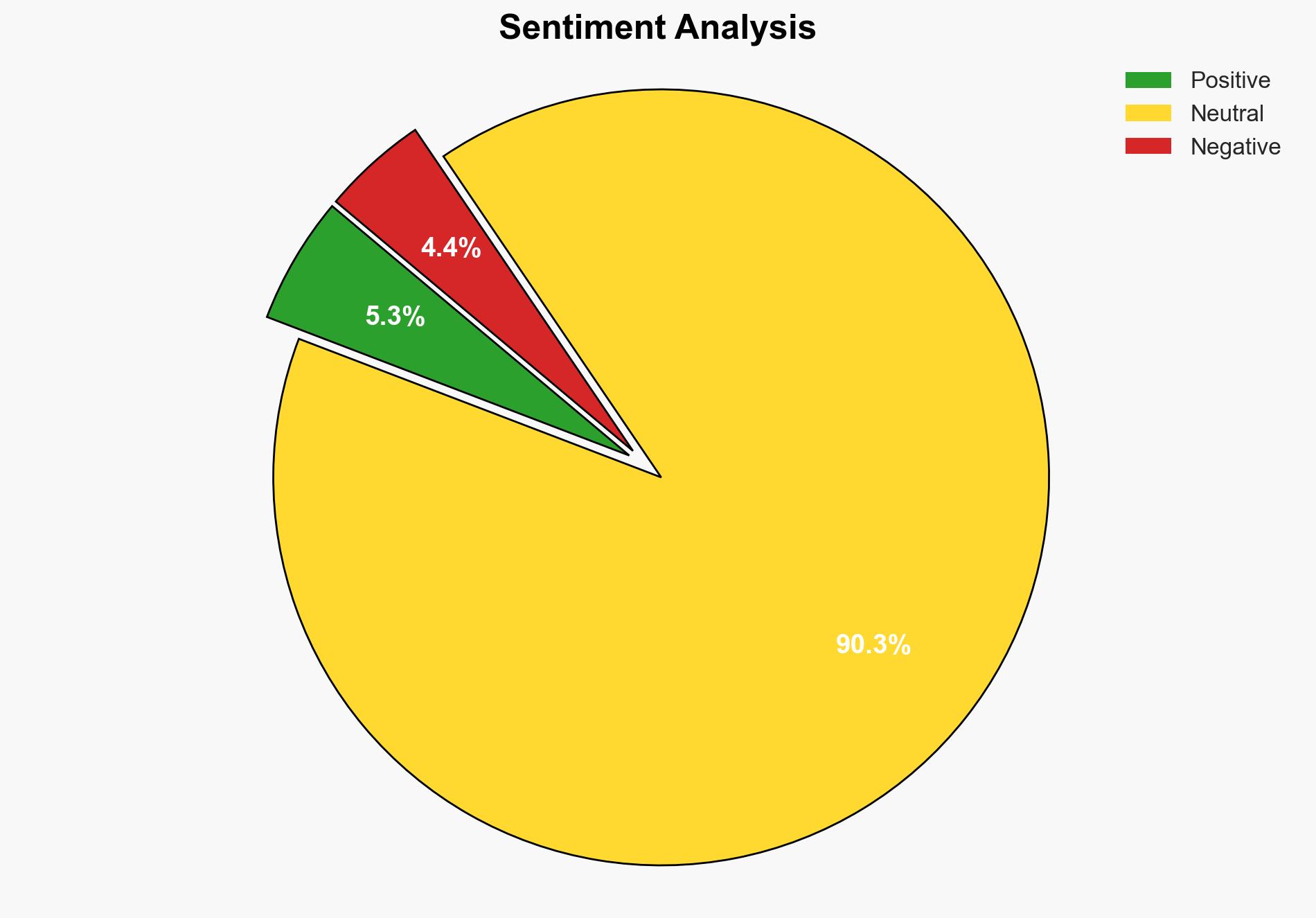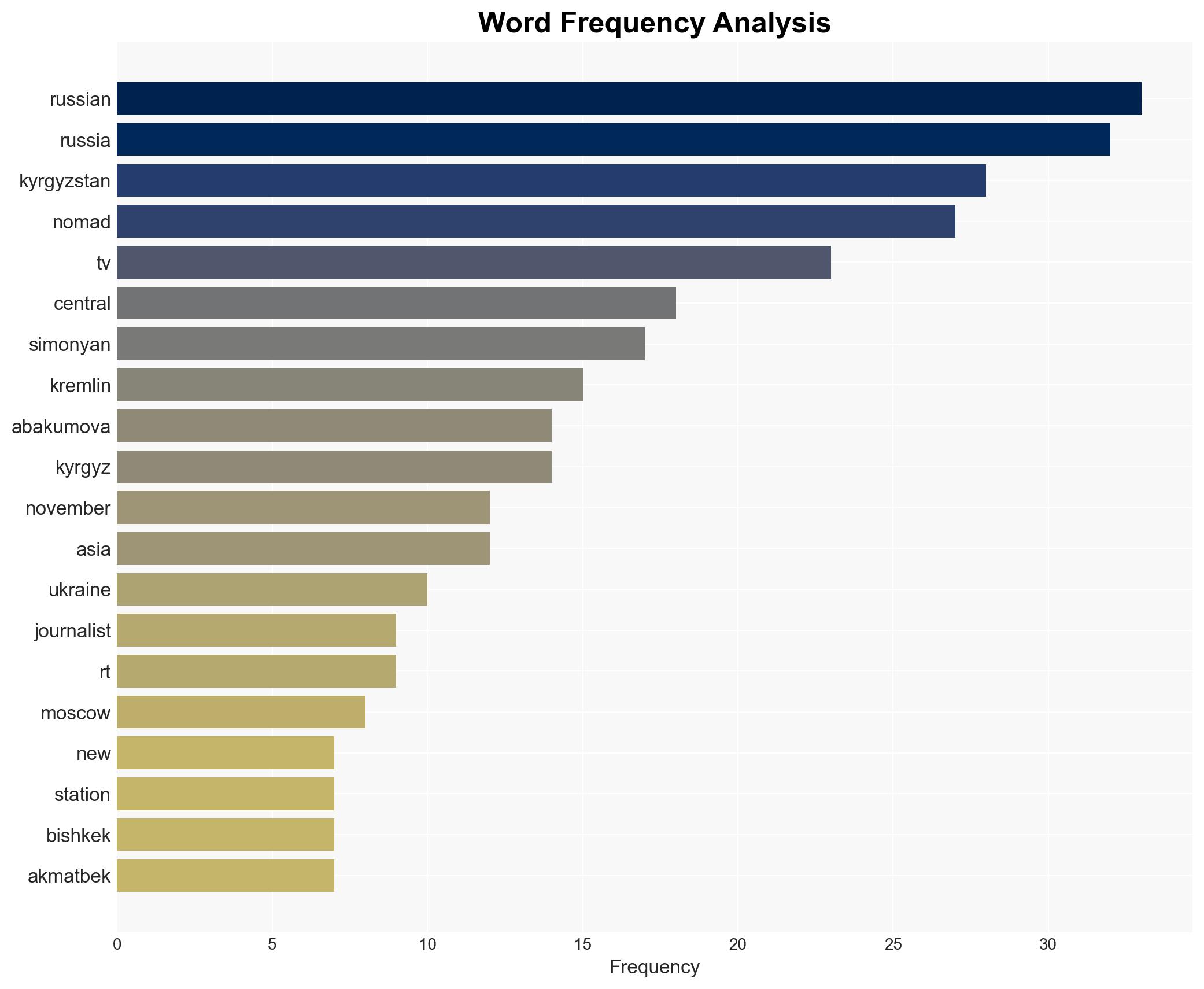A Tool Of Russian Propaganda New Russia-Linked TV Station To Be Launched In Kyrgyzstan – Globalsecurity.org
Published on: 2025-11-21
AI-powered OSINT brief from verified open sources. Automated NLP signal extraction with human verification. See our Methodology and Why WorldWideWatchers.
Intelligence Report:
1. BLUF (Bottom Line Up Front)
The establishment of Nomad TV in Kyrgyzstan represents a strategic maneuver by Russia to regain and expand its influence in Central Asia through media channels. The most supported hypothesis is that this initiative is a deliberate effort by the Kremlin to disseminate pro-Russian narratives and counter Western influence in the region. Confidence Level: Moderate. Recommended action includes monitoring the station’s content and influence, and strengthening local media independence.
2. Competing Hypotheses
Hypothesis 1: Nomad TV is a Kremlin-backed initiative to spread Russian propaganda in Central Asia, aiming to counter Western influence and regain regional dominance.
Hypothesis 2: Nomad TV is primarily a commercial venture, leveraging Russian media expertise to fill a market gap in Kyrgyzstan, with incidental political influence.
Hypothesis 1 is more likely due to the involvement of key Russian propagandists and the timing coinciding with regional geopolitical shifts. The presence of individuals like Anna Abakumova and Margarita Simonyan, known for their roles in Russian state media, supports this interpretation.
3. Key Assumptions and Red Flags
Assumptions: Russia seeks to maintain influence in Central Asia; media is a primary tool for influence operations.
Red Flags: High salaries offered to local journalists could indicate aggressive recruitment aimed at controlling the media narrative. The involvement of known propagandists suggests potential bias in content.
Deception Indicators: Public statements framing Nomad TV as independent may mask its true agenda.
4. Implications and Strategic Risks
The launch of Nomad TV could lead to increased Russian influence in Kyrgyzstan, potentially affecting political stability and media freedom. It may also escalate informational warfare in the region, with potential cyber threats targeting local media outlets. Economically, it could undermine local media businesses unable to compete with Russian-backed resources.
5. Recommendations and Outlook
- Monitor Nomad TV’s content and influence on public opinion in Kyrgyzstan.
- Support initiatives to strengthen local media independence and resilience.
- Engage with Kyrgyz authorities to promote media transparency and freedom.
- Best-case scenario: Nomad TV operates as a balanced media outlet, contributing positively to the media landscape.
- Worst-case scenario: Nomad TV becomes a dominant propaganda tool, significantly influencing Kyrgyz politics and public opinion.
- Most-likely scenario: Nomad TV influences the media landscape with a pro-Russian bias, but faces competition from other media sources.
6. Key Individuals and Entities
Anna Abakumova, Margarita Simonyan, Mirbek Moldakunov, Ilyazbek Baltashev, Ruslan Akmatbek, Ilan Shor.
7. Thematic Tags
Structured Analytic Techniques Applied
- Cognitive Bias Stress Test: Expose and correct potential biases in assessments through red-teaming and structured challenge.
- Bayesian Scenario Modeling: Use probabilistic forecasting for conflict trajectories or escalation likelihood.
- Network Influence Mapping: Map influence relationships to assess actor impact.
- Narrative Pattern Analysis: Deconstruct and track propaganda or influence narratives.
Explore more:
National Security Threats Briefs ·
Daily Summary ·
Support us





